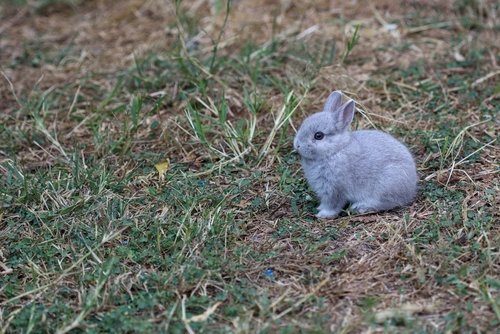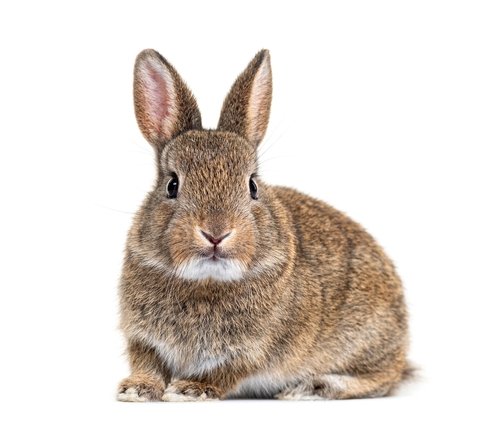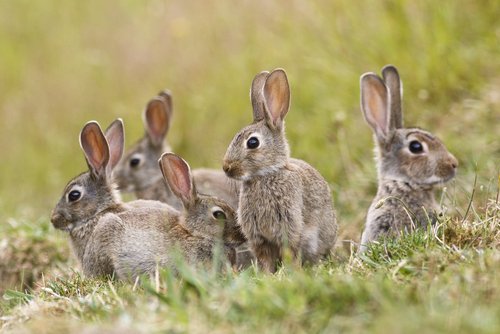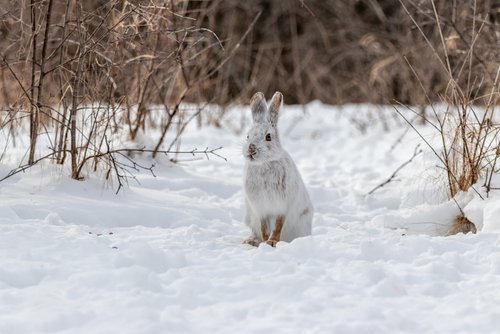The Most Unusual Rabbit Breeds You’ve Never Heard Of
Rabbits, with their soft fur, long ears, and adorable hopping gait, have captivated human beings for centuries. These furry creatures belong to the order Lagomorpha and are known for their ability to reproduce rapidly. Rabbits play a significant role in various cultures and ecosystems due to their unique characteristics and ecological contributions. In this blog, we will discuss the various rabbit species.
What Defines a Rabbit?
A rabbit is a small mammal belonging to the family Leporidae within the order Lagomorpha. It is characterized by its compact size, typically ranging from 20 to 50 centimeters in length.
Rabbits have long ears that aid in detecting sounds from afar, while their powerful hind legs enable them to navigate through different terrains with remarkable agility. Their fur comes in various colors, such as gray, white, black, and even spotted patterns.
Importance of Rabbits in Various Cultures and Ecosystems
Rabbits hold great cultural significance in different societies around the world. In many ancient mythologies and folklore, rabbits symbolize fertility and abundance due to their exceptional reproductive capacity.
For example, the brown rabbit was often associated with springtime rebirth and renewal in European folklore. In addition to cultural significance, rabbits play vital roles within the ecosystems they inhabit.
As herbivores, they contribute to plant dispersal by consuming seeds or fruits and later excreting them elsewhere—a process known as seed dispersal or endozoochory. This helps maintain plant diversity by allowing plants to colonize new areas.
Furthermore, rabbits act as prey for predators like wolves or foxes—forming an integral part of food chains within ecosystems. By controlling populations of certain plant species through grazing activities, they indirectly influence vegetation patterns.
Taxonomy and Classification
Kingdom: Animalia
Animalia, also known as the animal kingdom, encompasses a diverse range of multicellular organisms with specialized sensory organs and locomotion. Members of this kingdom are heterotrophic, meaning they obtain their energy by consuming organic matter. Within the animal kingdom, rabbits belong to the phylum Chordata.
Phylum: Chordata
The phylum Chordata includes animals with a notochord—a flexible rod-like structure—during some stage of their development. This species is further characterized by having a dorsal nerve cord and gill slits at some point in their life cycle. Rabbits fall under this species along with other familiar vertebrates like mammals, birds, reptiles, amphibians, and fish.
Class: Mammalia
Rabbits are classified under the class Mammalia, which comprises warm-blooded vertebrates characterized by mammary glands that produce milk for nourishing their young. Members of this class have hair or fur covering their bodies and can give live birth. Mammals exhibit various forms of parental care and have well-developed sensory systems to navigate their environment effectively.
Order: Lagomorpha
The order Lagomorpha consists of small to medium-sized mammals that possess two pairs of upper incisors—one large pair behind a smaller pair—which continuously grow throughout their lives. This order comprises rabbits, hares, and pikas. Lagomorphs are herbivorous animals with specialized digestive systems capable of efficiently extracting nutrients from plant materials.
Family: Leporidae
Rabbits belong to the family Leporidae within the order Lagomorpha. The Leporidae family includes over 60 species of rabbits and hares. These family members are characterized by their long ears, powerful hind legs, short fluffy tails, and distinctive dental structures.
The Leporidae family is further classified into various genera and species, each exhibiting unique physical traits and habitat preferences. Understanding the taxonomic classification of rabbits provides important insights into their evolutionary relationships and helps us appreciate the diversity of these fascinating creatures across different habitats worldwide.
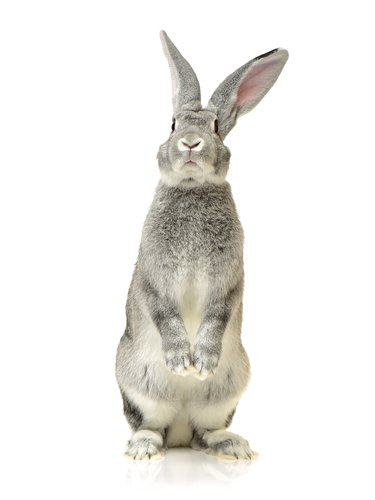
Common Rabbit Species
The European Rabbit (Oryctolagus cuniculus)
The European rabbit, scientifically known as Oryctolagus cuniculus, holds a prominent place in the world of rabbits. Originally hailing from the Iberian Peninsula, this species has enthralled individuals across the globe through its captivating traits.
It is fascinating to note that the European rabbit was introduced to various regions, including Australia and North America. These introductions were primarily driven by human influence and a desire to establish populations for hunting or domestication purposes.
The Eastern Cottontail (Sylvilagus floridanus)
Native to North America, particularly thriving in the eastern region, the Eastern cottontail (Sylvilagus floridanus) reigns as one of the most recognizable rabbit species. What distinguishes this creature from its counterparts is its notable feature—a cotton-like tail that gives it an unmistakable appearance. With its brownish fur and large eyes, the Eastern cottontail embodies a sense of charm that captivates both nature enthusiasts and casual observers alike.
The Snowshoe Hare (Lepus americanus)
Delighting in the boreal forests of North America, specifically adapted to thrive within this unique ecosystem is the snowshoe hare (Lepus americanus). This remarkable creature possesses an incredible ability to change its fur color throughout different seasons as a means of camouflage.
Its fur transitions from a lustrous brown hue during summer months to snowy white during winter—a stunning adaptation that provides optimal concealment from predators such as lynxes and owls. The snowshoe hare’s exquisite coat exemplifies nature’s ingenious solutions for survival.
The Netherland Dwarf (Oryctolagus cuniculus domesticus)
Among the small rabbits that have captured the hearts of many, the Netherland Dwarf (Oryctolagus cuniculus domesticus) stands out as a popular choice among pet enthusiasts. This breed, which is one of the smallest domestic rabbit breeds, charms with its diminutive size and irresistibly adorable appearance. Originating from the Netherlands in the early 20th century, these petite rabbits possess a compact body structure and come in various colors such as black, white, and chestnut brown.
Their endearing nature makes them cherished companions for individuals seeking furry affection. Each of these rabbit species holds its own unique allure, capturing our fascination through their diverse adaptations and captivating traits.
Whether it be the global influence of the European rabbit or the distinct cotton-like tail of the Eastern cottontail, each species leaves an indelible mark on our perception of these enchanting creatures. The snowshoe hare’s remarkable fur color change during seasons and the Netherland Dwarf’s appeal as a beloved pet highlight nature’s versatility in creating such diverse forms within this extraordinary group of animals.
Endangered Rabbit Species
Amur Leopard Rabbit (Caprolagus hispidus)
The Amur Leopard Rabbit, scientifically known as Caprolagus hispidus, is a rabbit species endemic to the Terai region of Nepal and India. This remarkable rabbit is unfortunately classified as critically endangered on the IUCN Red List. One of the main factors contributing to its endangered status is habitat loss due to human activities such as deforestation for agriculture and urbanization.
Additionally, poaching poses a significant threat to the population of Amur Leopard Rabbits. The illegal trade in their fur and meat, driven by high demand in some regions, has further pushed this magnificent creature towards extinction.
Riverine Rabbit (Bunolagus monticularis)
The Riverine Rabbit, scientifically known as Bunolagus monticularis, is one of the rarest rabbit species globally. It inhabits only a small area within South Africa’s Karoo Desert region.
These small rabbits are incredibly elusive creatures with distinct adaptations that enable them to survive in their harsh habitat. Unfortunately, due to habitat fragmentation and degradation caused by human activities such as agriculture and infrastructure development, the population of Riverine Rabbits has plummeted dramatically over the years.
With an estimated population size of merely a few hundred individuals remaining in the wild, urgent conservation efforts are crucial for their survival. Both the Amur Leopard Rabbit and Riverine Rabbit face severe threats that have led them to be critically endangered species.
It is essential for us to raise awareness about these unique rabbits’ plight and actively support conservation initiatives aimed at preserving their habitats and combating illegal wildlife trade. By taking action now, we can work towards ensuring that future generations have a chance to witness these remarkable creatures thriving in their natural environments once again.
Adaptations
Physical Adaptations
Rabbits have evolved a range of remarkable physical adaptations that enable them to thrive in various environments. Their powerful hind legs, equipped with strong muscles and long feet, allow them to hop swiftly and jump great distances to evade predators. Additionally, rabbits possess sharp claws on their front paws that aid in digging burrows for protection and shelter.
Their large, highly sensitive ears serve multiple purposes – they facilitate excellent hearing capabilities, allowing rabbits to detect approaching danger, while also assisting in thermoregulation by dissipating excess heat. Furthermore, rabbits possess a keen sense of smell, which helps them locate food sources and avoid potential threats.
Camouflage
Many rabbit species have developed impressive camouflage mechanisms to survive in their respective habitats. The seasonal coat color change of the Snowshoe Hare is a striking example.
During winter months, their fur turns snowy white to blend with the snow-covered landscape, offering them protection against predators such as lynx and wolves. In contrast, during warmer months when snow has melted away, these hares molt into a brownish fur color that matches the surrounding vegetation.
Reproduction Strategies
The reproductive adaptations of rabbits are equally fascinating. One notable adaptation is the rapid breeding rate exhibited by many rabbit species. Female rabbits experience induced ovulation; this means they ovulate only after mating has taken place rather than having regular menstrual cycles like humans or other mammals.
This adaptation allows female rabbits to produce large litters at frequent intervals throughout the year. Additionally, newborn rabbits called kits are born hairless and blind but develop quickly due to high milk production from their mothers.
Conclusion
The world of rabbit species is incredibly diverse and captivating when considering their unique adaptations for survival in different environments. From physical traits such as powerful hind legs and keen senses to camouflage mechanisms and reproductive strategies, these small and agile creatures have successfully adapted to a range of challenges presented by their habitats.
While some rabbit species face threats like habitat loss and endangerment, efforts are being made worldwide to conserve their populations and protect their habitats. By appreciating the extraordinary adaptations of rabbits, we deepen our understanding of the intricate web of life on our planet.

